Work-in-Progress
1. Research/Planning

During my research, dhunge dhara water spouts stood out to me (3 in particular). I haven't practiced realistic materials as much and the layers of weathering materials seemed interesting enough of a challenge for myself.

The Tusha spout in particular inspired me the most (2 objects with complementing forms + contrasting materials).
I know it's a really common pitfall for newer artists to try to design their own concepts. I was so torn between these 3 references, I took a risk and photobashed for the first time. Things I looked for while photobashing: 1. stay true to the chimeric theme and emphasize animal/plant elements that blend into each other. 2. choose things that seemed like a technical challenge i.e. elephant trunk and ridiculously high-relief stone leaves 3. room for personal creativity.
Not sure if I failed or not but here is my result after some brainstorming:
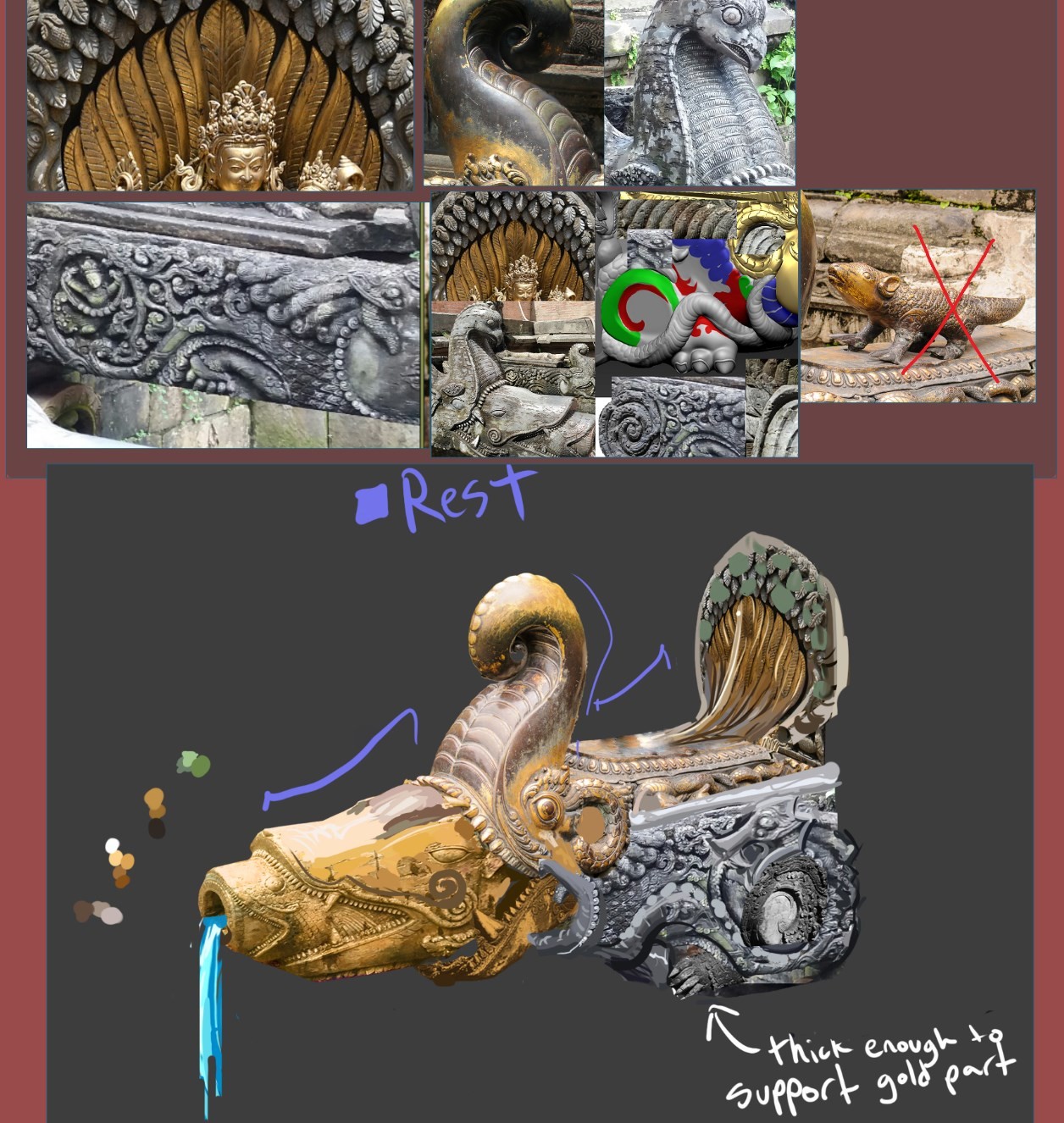
Next, I broke down the object best I could for sculpting (green = UV+ tileable alpha) as well as materials (shown later in texturing section)
2. High Poly
I realized i needed a proper stone wall to complement the spout, else it just felt out of place. Timelapse:
After getting my sculpt to a confident stage, I relied heavily on IMM's and VDM's for my secondary forms for ornaments. Turns out I made way more than I initially planned.:
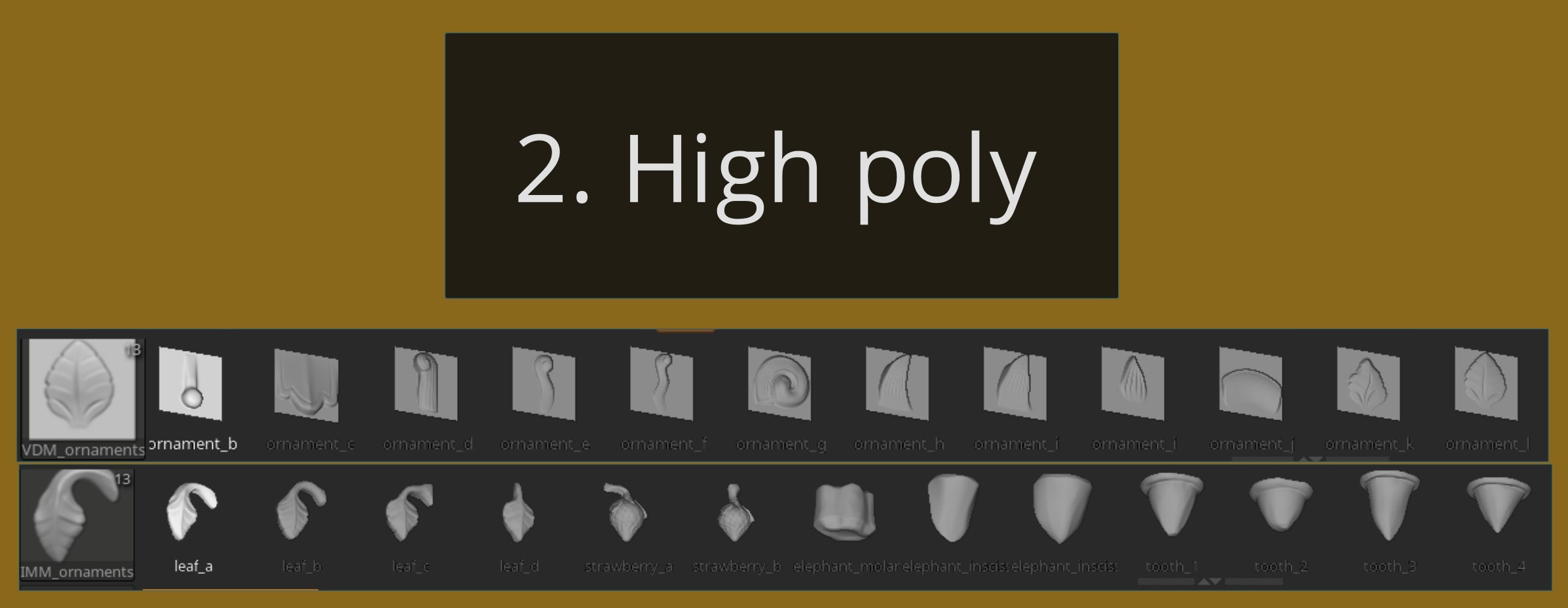
For some reason, I thought it'd be impressive to boolean out a hole through my entire sculpt to run a pipe through it. I instantly regretted it.😬 It's totally not worth it for the results I got. I'm sure there's a lesson about scope or something here...
Tiny bit of storytelling though with this tuberculation.

Finished sculpt:

3. Retopo/Unwrap
That pipe was not in vain because I did actually learn something! Topogun's extract isn't too ideal, so I made a split up version of the high poly of difficult-to-retopo areas and welded retopo results. 
Stone: I previously retopo'd the IMM stone leaves but for the base stone, I discovered decimation is a legitimate form of retopo for organic sculpts. Just as a warning to fellow students, decimate in iterations to to avoid nasty geo! I learned the hard way when I spent half a day removing non-manifolds.
Brass Spout: I manually retopo'd. Since the challenge had no poly restrictions, I took the liberty of subdividing. Results:

For UV'ing, not much to it. RizomUV made UV'ing so much easier. 2 4K texture sets granted me some freedom to uniquely unwrap. Results: 
4. Baking
Way too many artifacts! PureRef actually helped a lot; I'd just "toured" my mesh, screenshot all the errors, then fix the geo/UV's.
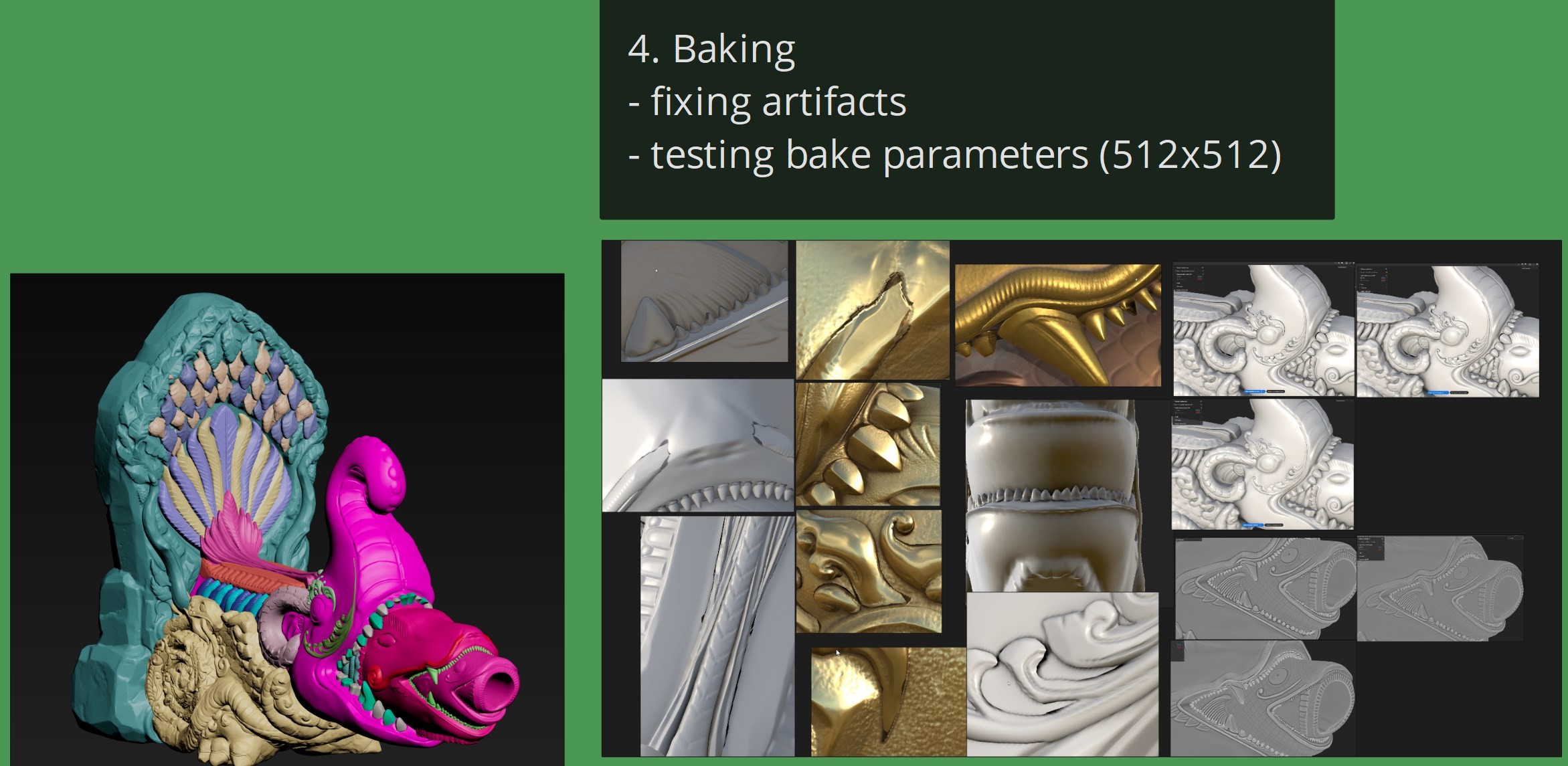
I'm learning the meaning of "measure twice, cut once". I had multiple "final" bakes before noticing some obvious artifact later into texturing.

5. Texturing
Brass: For weeks, I struggled to make sense of this reference. Everyone I asked (even multiple pros) struggled to nail the materials but here's my best conclusion:

A chemist confirmed my suspicions about the "new" brass at the top and offered an interesting explanation:
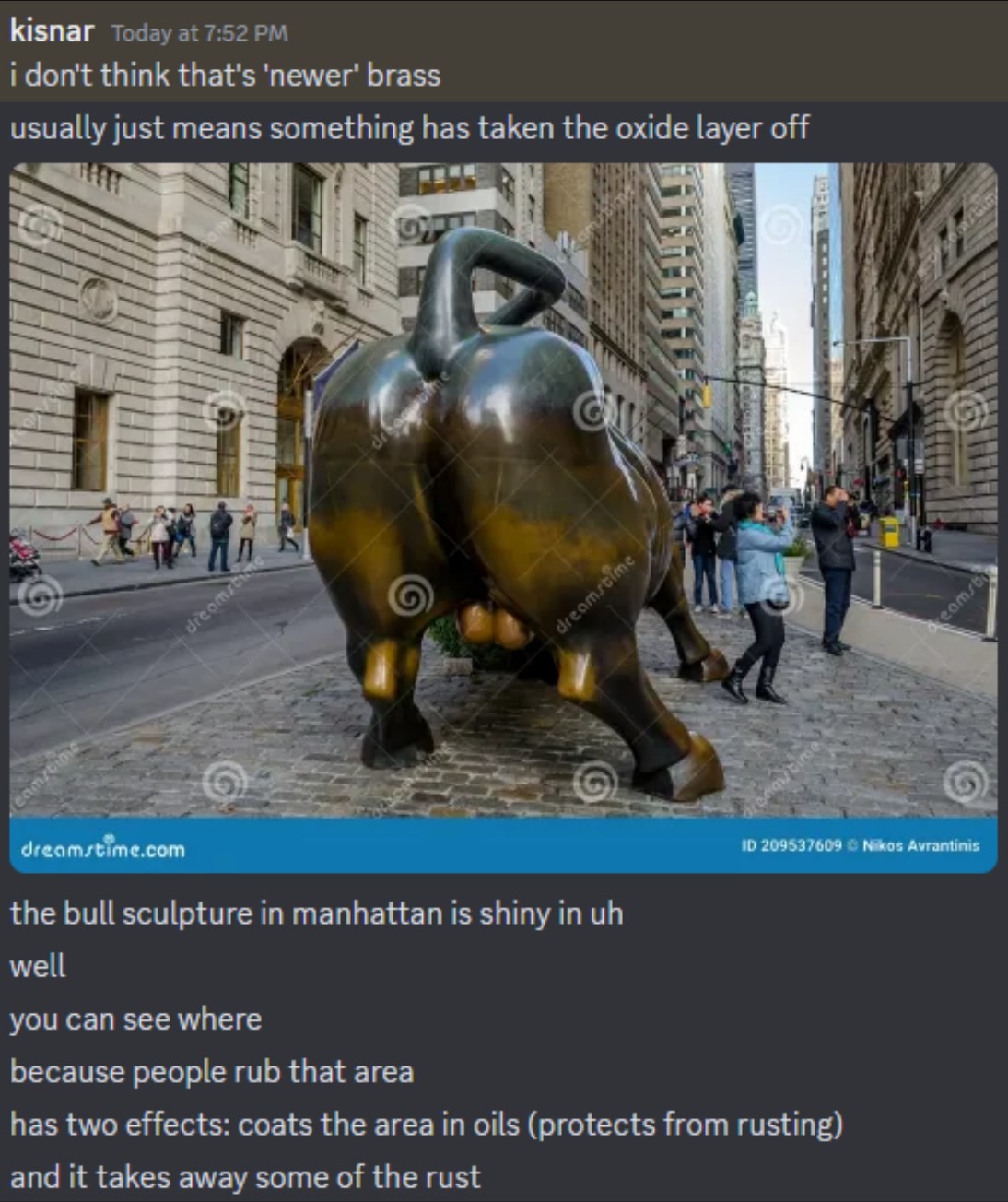
I also had to make a big decision regarding the gold paint. I realized the reference probably used some kind of faux gold paint. I decided to mix in more metallic pigments in hopes of making that area pop more as the focal point.

I found the grey material is most likely a primer and not patina (Also, neat timelapse showing how different oxidations occur: brown/red = less oxygen, patina = more oxygen):

Stone:

While I decided this black substance was lichen, it could very well be some kind of fungus or bacteria. edit: ended up manually painting but at the time, I thought WSN + blur would give that effect)
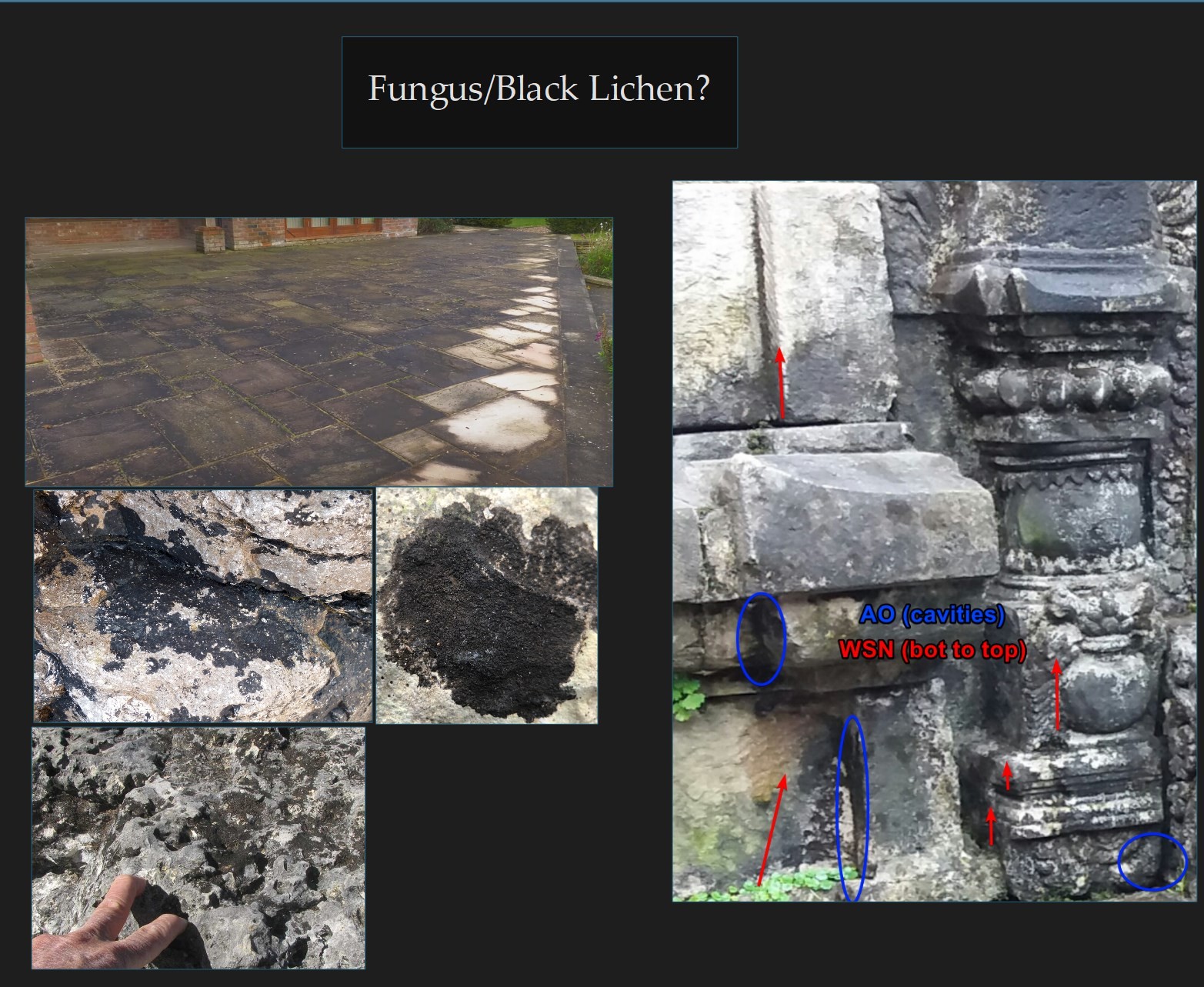
Texturing (outdated):
It ain't pretty or fancy but I love me some anchor point magic!
"Final" result:
Takeaways:
Not happy of it at its current state but I'm going to keep polishing it after the challenge. It was a fun way to break out of my comfort zone as a growing artist.
- My texturing game needs work!
- I should probably just stick to a reference next time instead of photobashing😅
- From what I saw, I feel like almost every other submission absolutely destroys mine. Both devastating and inspiring!
Big thanks to Handy Chevrin and Christina from Virtuix who gave me some great feedback and guidance. Always grateful when pros take the time to help some random newbie out.